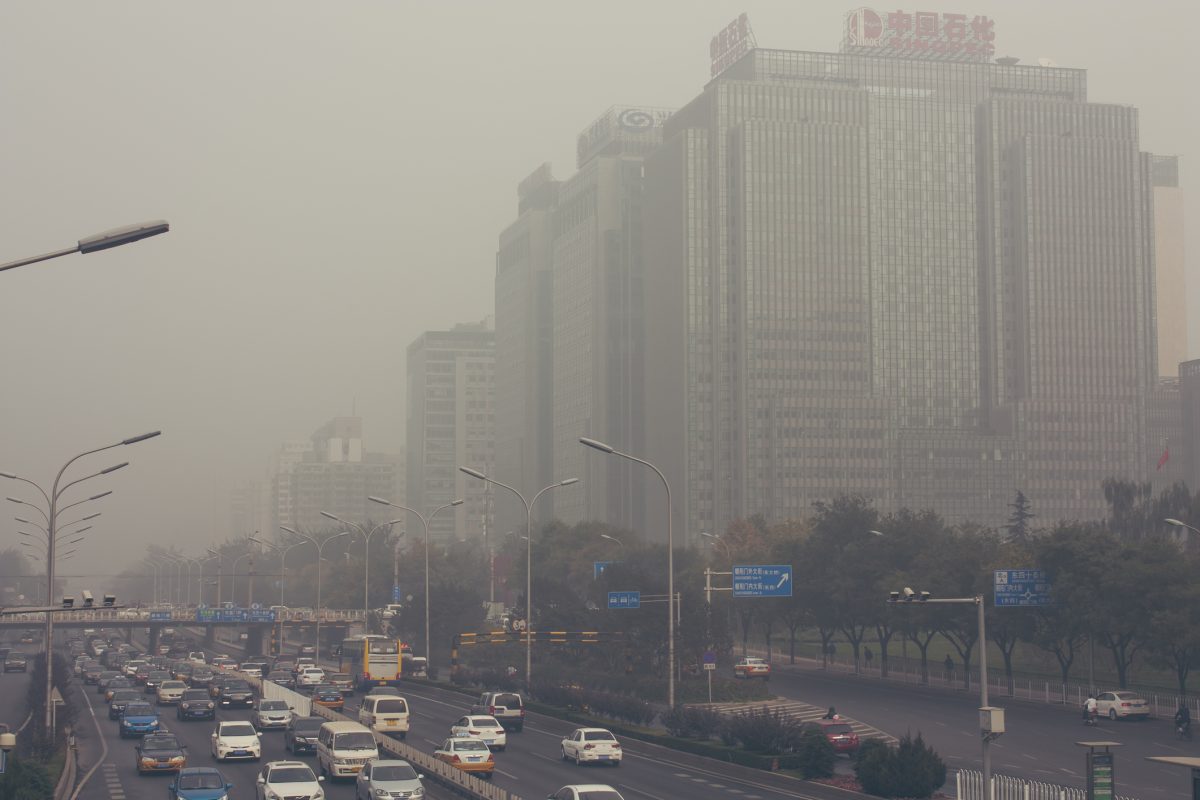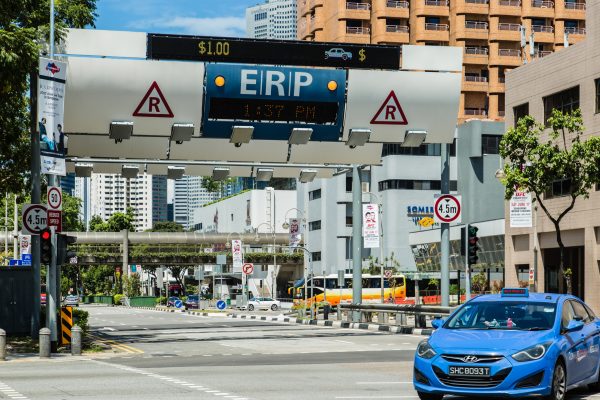
To reduce congestion and improve its notoriously poor air quality, Beijing introduced driving restrictions before the 2008 Olympic Games. They are still in place in a relaxed version today. Credit: Tt Pang|Dreamstime.com.
Living close to urban amenities often costs a premium. Large downtown apartment buildings capitalize on residents’ willingness to pay for their proximity to stores and restaurants. To head anywhere else, many downtown dwellers rely on cars—perhaps paying a convenience fee for parking them nearby.
A downside of that lifestyle is traffic congestion and poor air quality, which city planners have tried to improve for decades. In June 2008, Beijing rolled out an unusual city-wide strategy: Residents were only allowed to use their car every other day. (Mexico City has banned most drivers from using their car one weekday per week since 1989.)
Beijing’s policy is still in place in a relaxed version today, although researchers have found limited effects on average car travel times and air quality. But assistant professor Rhiannon Jerch and colleagues recently tackled a less obvious question: Did the policy affect the city’s housing market?
“A foundational theory of urban economics is that people are willing to pay more for housing when transportation costs are low, but this has not been tested extensively with empirical data,” says Jerch, who joined AAE in fall 2023 from Temple University. “Since the new policy made it more desirable to live close to public transit stops, we wanted to see how housing prices responded to this change in transportation costs.”
The study was a perfect fit for Jerch’s interest in the dynamic, often invisible forces that shape cities and how people interact with them. The researchers first analyzed city- and household-level data about travel modes before and after the policy. Next, they combined sales prices of more than 250,000 properties and income data from 46,000 households with the location of existing subway stations and those newly added to the network from 2005 to 2012.
The researchers compared homes that only differed in their distance from subway stations but had otherwise similar price determinants, such as age, size and proximity to natural amenities and desirable schools. This helped tease out the effect of primary interest.
The Chinese government introduced the driving restrictions as part of preparations for the Summer 2008 Olympic and Paralympic Games. The original policy prohibited car use in central Beijing and all suburbs every other day, based on an odd or even last number of the owner’s license plate. Today’s version excludes some suburban roads, limits restricted hours (7 am-8 pm) and rotates restricted days every 13 weeks. Buses, taxis and public safety vehicles are exempt.
People could react to such restrictions in multiple ways, says Jerch. They may purchase a second car (a common response to the Mexico City policy), make carpooling arrangements or use taxis. But Beijing residents reacted differently.
First, higher-income households were more likely to replace car trips with subway rides, previously chosen mostly by lower-income households. This matched city-level observations of a fast-growing share of subway trips between 2005 and 2013. Second, home buyers were willing to pay a premium for convenient access to subway stations: The sales price for properties one kilometer (0.63 miles) closer to a subway station was 6.5 percentage points higher.
Importantly, that willingness to pay for something perceived as more valuable than before endured over time. Before the policy, the opening of a new subway station increased home prices within one kilometer of that station for just two months. But after the policy, housing prices near a new station remained elevated for nine months. This was compelling evidence that the policy had long-term effects on the housing market, says Jerch.
The next question was whether this had an impact on who could afford to live where. The researchers found that the average income difference for living one versus two kilometers from a station was 19% higher after the policy than before. This was mostly driven by wealthier families moving into newly-built properties near subway stations.
“Our results show that a policy aimed at improving environmental outcomes—better air quality in this case—had unintended consequences on the housing market that might generate concern about equity of access,” says Jerch.
This is a particular problem, she adds, when owning a car is cost-prohibitive for low-income residents, as in many Latin American and Asian countries. A potential solution is to pair driving restrictions with other tools to keep public transit both accessible and affordable for low-income residents.
Maintaining access could involve subsidizing taxis or ride-sourcing companies, such as Uber and Lyft, to help residents reach their nearest public transit stop. Strategies focused on affordability include income-based transportation discounts, such as “fair fare” programs in several U.S. cities, and a fare-free streetcar route through central business districts.

A market-based alternative to Beijing’s policy is congestion pricing. Here, fees for driving on certain roads vary throughout the day based on current congestion levels. Several Latin American, Asian and European cities have implemented such policies. The automated detection of violations with license plate cameras has simplified their enforcement.
Expanding subway and light rail networks is another option for reducing congestion but tends to be invasive and expensive. Technology that delivers information more quickly and reliably than before can change behavior at a much lower cost. Jerch has shown this by analyzing the impact of adding real-time data about public transit arrival times to smartphone mapping apps.
“I find it fascinating to study how people respond to different types of public transit incentives,” says Jerch. “It illustrates how environmental policies affect both human behavior and city shapes and features.”